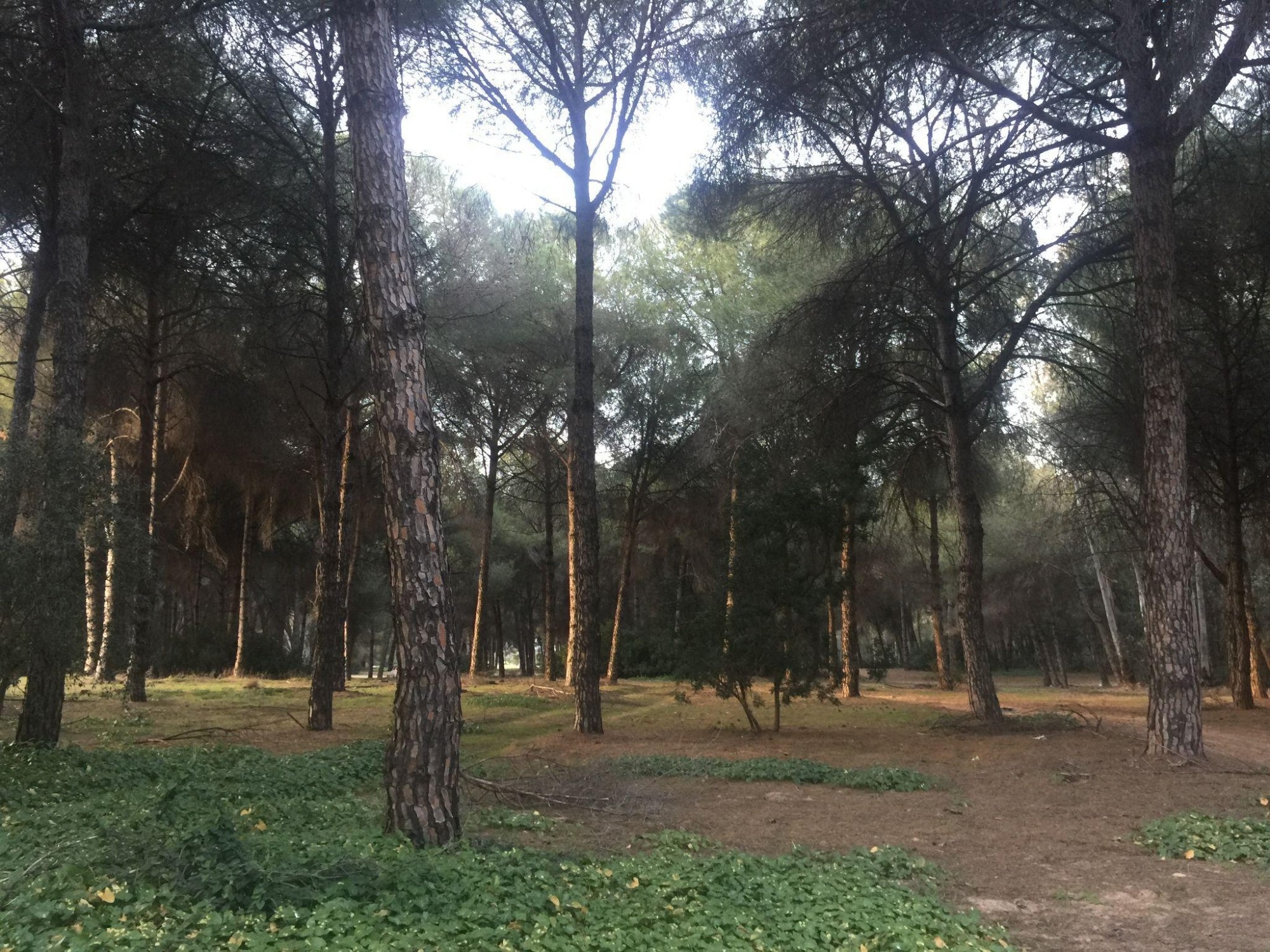The areas that are most important for preserving soil ecological resources are only partially covered by current protected areas, according to the findings of a new study published in the journal Nature.

The soils of this pine forest in Seville were included in the study. Image Credit: Manuel Delgado Baquerizo.
A multinational team of scientists analyzed different dimensions of soil biodiversity (local species richness and uniqueness) and ecosystem services to determine global hotspots for conserving soil ecological values (like water regulation or carbon storage).
They discovered that these dimensions peaked in different areas of the globe. Temperate ecosystems, for example, have more local soil biodiversity (species richness), but colder ecosystems were designated as soil ecosystem service hotspots. Furthermore, the findings show that tropical and arid ecosystems have the most diverse groups of soil organisms.
The new analysis shows where efforts to conserve soil ecological values are most necessary. Soil ecological values are frequently ignored in nature conservation management and policy decisions.
Soils constitute their own realm, hidden beneath human feet and alive with life. Countless numbers of earthworms, nematodes, insects, fungi, bacteria, and other organisms call them home. Yet scientists know very little about these organisms or their significant effects on ecosystems. There would be little life on the land and probably no humans without soil.
In actuality, soil fertility affects the majority of the food consumed, either directly or indirectly. Soils, on the other hand, are subject to climate and land-use change. To effectively safeguard soil ecological resources, it is necessary to first understand where they are most vulnerable.
Hotspots of biodiversity for plants and animals living above ground were recognized decades ago. Until now, however, no equivalent assessment was or could be conducted for soil ecological values.
First Global Assessment Considering Multiple Soil Ecological Values
A group of international researchers guided by the German Centre for Integrative Biodiversity Research (iDiv), Leipzig University, Martin Luther University Halle-Wittenberg (MLU), and the Instituto de Recursos Naturales y Agrobiología de Sevilla (IRNAS) published the first global estimate of hotspots for conserving soil ecological values in the journal Nature.
Researchers carried out an amazing global field survey, collecting over 10,000 observations of biodiversity (bacteria, fungi, archaea, protists, and invertebrates) and indicators of ecosystem services from 615 soil samples from all continents. These observations were pooled to determine three soil ecological dimensions: (1) local species richness, (2) biodiversity uniqueness, and (3) ecosystem services (such as water regulation or carbon storage).
Soil Ecological Values Peak in Contrasting Regions of the Planet
The findings indicate that each of the three dimensions peaked in distinct parts of the world. Temperate ecosystems, for example, had the highest local soil species richness, whereas arid ecosystems and the tropics had the highest biodiversity uniqueness.
When you dig into a European soil, for instance in a forest, you will find many different species in one single spot. When you go to a forest some kilometers further, while different, you will find similar species. Not so in the tropics, where a few kilometers can mean completely different communities.
Dr. Carlos Guerra, Study First Author, German Centre for Integrative Biodiversity Research (iDiv) Halle-Jena-Leipzig
Guerra is now associated with iDiv and Leipzig University and began working on the project at iDiv and MLU. Ecosystem services, the third dimension evaluated, often peaked in the colder high-latitudinal ecosystems, besides the two dimensions involving biodiversity.
Hotspots for Soil Nature Conservation Identified
The different spatial patterns for the three distinct dimensions show how difficult it is to safeguard all three of them simultaneously.
It is much more challenging than for plants and mammals, where there is usually a better spatial match of the different dimensions. When it comes to protecting soils, we should probably not focus on locally maximizing all soil ecological dimensions at the same time but rather on integrated approaches that highlight the local potential.
Dr Carlos Guerra, Study First Author, German Centre for Integrative Biodiversity Research (iDiv) Halle-Jena-Leipzig
Despite these challenges, the researchers were able to pinpoint ecosystem hotspots where soil nature preservation ought to be given top emphasis. These hotspots were primarily found in North America, Asia, Northern Europe, and the tropics.
Prioritizing Soil Nature Conservation in International Policies
The authors assessed these priority hotspots in already protected regions. They discovered that only half of the hotspots were now protected by any kind of nature conservation.
Protected areas have been selected mostly for conserving plants, birds or mammals. We need to include soils, their biodiversity and services in our perspective. Therefore, governments and decision-makers need to set soil nature conservation as a priority in the context of the international negotiations for the 2030 biodiversity targets.
Dr. Manuel Delgado-Baquerizo, Study Senior Author, Instituto de Recursos Naturales y Agrobiología de Sevilla
The new study may be useful since it shows where conservation efforts for soil nature are most needed.
The study was funded inter alia by the Deutsche Forschungsgemeinschaft (DFG; FZT-118).
Journal Reference:
Guerra, C., et al. (2022) Global hotspots for soil nature conservation. Nature. doi.org/10.1038/s41586-022-05292-x.